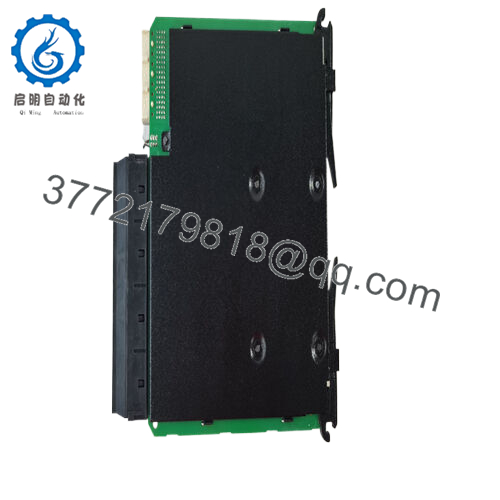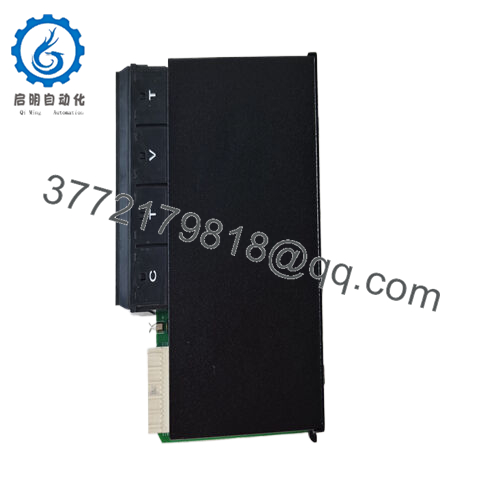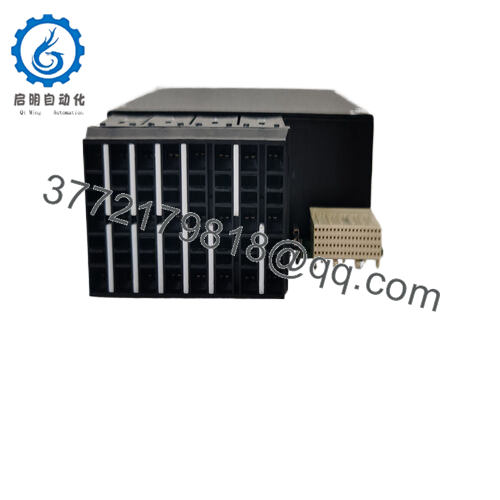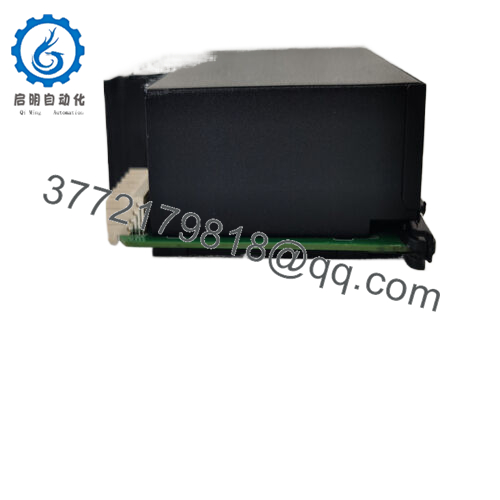Description
In the demanding realm of industrial automation, where power system stability hinges on precise monitoring of currents and voltages amid fluctuating loads and potential faults, engineers grapple with the risks of undetected anomalies that can escalate into cascading failures. Consider a substation or generator setup: transformers and lines are under constant stress from harmonics, transients, or ground faults, yet traditional monitoring often falls short, leading to delayed responses that compromise process control and safety. This is where the GE UR8NH CT/VT module emerges as a critical enabler, addressing the need for high-reliability signal acquisition in protective relaying. It ensures that raw field data—currents from CTs and voltages from VTs—feeds accurately into your relay logic, minimizing distortion and enabling swift, informed decisions to prevent outages.
These modules become indispensable in environments prioritizing uptime, such as grid-tied renewables or heavy industrial feeders, where even brief signal inaccuracies can trigger unnecessary trips or overlook brewing issues. I’ve consulted on sites where mismatched CT/VT interfaces caused erratic I/O signals, inflating engineering hours on custom fixes and eroding trust in the automation stack. The GE UR8NH counters this by delivering scalable, isolated interfacing that aligns seamlessly with universal relay platforms, fostering system stability without the overhead of ad-hoc adaptations. In process control scenarios governed by stringent standards like IEEE C37.118, it underpins the fidelity required for synchrophasor data or differential schemes, turning potential vulnerabilities into robust safeguards.
Ultimately, deploying the GE UR8NH shifts focus from reactive patching to proactive optimization, supporting modular expansions that keep pace with evolving grid demands. It’s tailored for those high-stakes moments in industrial automation where signal integrity isn’t just technical—it’s the linchpin of operational resilience and regulatory compliance.

UR8NH

UR8NH
When integrating a CT/VT module like the GE UR8NH into your protective relay architecture, it’s helpful to view it as the frontline interpreter between the physical grid and your control intelligence. This unit captures up to eight CT inputs at 1/5A ratings and corresponding VT channels, scaling and conditioning them to deliver clean, digitized values to the host UR-series relay—think of it plugging into the backplane of a G60 or F60 unit, where it shares processed data across FlexLogic for custom protection algorithms. Positioned at the I/O edge, it buffers the relay core from field-side noise, using galvanic isolation to thwart ground loops or surges that plague unshielded setups.
In practice, it interacts fluidly with upstream power supplies and downstream contactors or breakers, supporting redundancy through dual-channel configs that maintain operation if one path falters. Diagnostics run natively, monitoring input validity and alerting via Modbus TCP or IEC 61850 protocols to SCADA layers, so you catch drift in CT ratios before it skews metering. No external scalers needed; it handles diverse ratings on-the-fly, integrating with UR’s event recorder for forensic analysis post-fault. For a typical substation bay, you’d slot it alongside digital I/O modules, forming a cohesive rack that feeds real-time phasors to phasor measurement units—reducing latency in wide-area monitoring.
This modularity shines in hybrid environments, where it bridges legacy analog feeds to modern Ethernet backbones, easing migrations without full overhauls. If your stack involves PRP/HSR for process bus, the GE UR8NH adapts without hiccups, ensuring your protection schemes—be it line differential or overcurrent—operate with the precision that defines reliable industrial automation.
| Specification | Details |
|---|---|
| Model Number | UR8NH |
| Brand | GE Multilin |
| Type | CT/VT Input Module |
| Input Voltage | 24 V DC |
| Operating Temp Range | -40°C to +70°C |
| Mounting Style | Chassis/Backplane |
| Dimensions | 6 x 7 x 1.5 in |
| Weight | 1.15 kg |
| Interface/Bus | Modbus TCP / IEC 61850 |
| Compliance | CE, RoHS, UL |
| Supported Protocols | Modbus TCP, DNP3, IEC 61850 |
| Typical Power Draw | 8 W |
Selecting the GE UR8NH equips your system with a foundation of unwavering signal accuracy that directly bolsters fault detection speed, allowing protective elements to act before minor glitches snowball into major disruptions. Engineered for the unyielding conditions of power delivery, it ensures long-term performance by continuously validating CT/VT circuitry, so your relay’s logic receives untainted data that sharpens trip decisions and metering precision—translating to fewer false alarms and tighter compliance in regulated sectors.
This choice also streamlines maintenance efficiency, as embedded health checks surface anomalies via the front panel or EnerVista software, empowering teams to address them during planned windows rather than emergency scrambles. In distributed control setups, it reduces engineering overhead by simplifying channel scaling, freeing resources for advanced features like adaptive relaying. Operators gain confidence from its isolation barriers, which shield against EMI in noisy substations, yielding consistent I/O behavior that sustains throughput without constant recalibrations.
Moreover, its role in modular UR architectures promotes seamless scalability—add bays or upgrade schemes without signal rework, fostering a resilient ecosystem that adapts to load growth or renewable integrations. The payoff? Lower total ownership costs through proactive insights that extend asset life, alongside the peace of mind that comes from a module designed to anticipate the grid’s unpredictability.
In utility-scale substations, the GE UR8NH is routinely integrated into line protection schemes, where it processes CT/VT feeds from overhead lines to enable distance relaying under harsh weather and high-voltage exposure—vital for critical system uptime in transmission networks. Its ability to handle fast transients ensures continuous monitoring without dropouts, supporting process control environments that demand sub-cycle responses.
For generator applications in power plants, it interfaces with stator windings to facilitate 100% ground fault detection, enduring vibrational stresses and thermal cycles while delivering scaled signals for backup relaying. Used in power plants or equivalent setups, the GE UR8NH enhances modular integration, allowing quick expansions for larger turbine arrays without compromising signal reliability.
In industrial motor control centers, particularly for petrochemical refineries, it supports overcurrent and undervoltage protection across feeders, thriving in corrosive atmospheres to maintain fast data cycles for selective coordination—keeping operations lean amid demanding loads.
UR8LH – Enhanced variant with expanded EMI immunity for extreme EMI-heavy substation deployments.
UR8CH – Digital I/O companion module for hybrid analog-digital protection racks.
UR8GH – High-channel density alternative suited for compact generator interfacing.
G60 – Base UR-series relay platform that hosts the UR8NH for line differential applications.
F60 – Feeder protection host relay offering seamless UR8NH integration for distribution feeders.
UR6DH – Lower-power sibling for lighter-duty VT monitoring in auxiliary systems.
UR9KH – Advanced upgrade path with built-in phasor processing for synchrophasor-enabled grids.
Prior to rack-mounting the GE UR8NH, confirm chassis compatibility within your UR-series frame—mismatched slots can complicate backplane signaling, and always cross-check firmware versions against the host relay using EnerVista UR Setup for alignment. Ventilation is key; ensure at least 2 inches of clearance around the module to dissipate heat from adjacent high-power cards, especially in sealed cabinets where ambient temps push toward the upper limit. If retrofitting, inventory your CT/VT ratios upfront—mismatches here demand parameter tweaks that could otherwise delay commissioning.
Ongoing upkeep keeps it humming reliably: bi-monthly, review front-panel LEDs and oscillography via the software for input anomalies, catching saturation early before it affects relay curves. Inspect terminal blocks quarterly for oxidation, particularly in dusty or humid locales, tightening as needed to avert contact resistance buildup. Annual full-system tests during outages—simulating faults across channels—validate scaling and isolation, while logging internal DC levels flags power supply wear. Firmware refreshes should coincide with relay-wide updates, always with a config backup. These steps, though routine, fortify the module’s role in your automation chain, heading off issues that could ripple through protection logic.



 WhatsApp: +86 16626708626
WhatsApp: +86 16626708626 Email:
Email:  Phone: +86 16626708626
Phone: +86 16626708626


